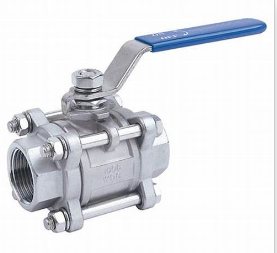Industrial Pressure Regulating Valve for Optimized System Performance and Safety Solutions
Industrial Pressure Reducing Valve An Essential Component for Safe Operations
In the realm of industrial applications, maintaining optimal pressure is fundamental to ensuring safety, efficiency, and longevity of equipment and processes. One of the key components to achieve this is the pressure reducing valve (PRV). These devices are designed to reduce a higher inlet pressure to a lower, more manageable outlet pressure, ensuring that downstream equipment operates within safe limits.
A pressure reducing valve typically consists of a valve body, a pressure-sensing element, and an actuator. The valve body is where the high-pressure fluid enters and where the reduction takes place. The pressure-sensing element monitors the outlet pressure and feeds this information back to the actuator, which adjusts the valve position accordingly to maintain a constant pressure.
Types of Pressure Reducing Valves
Pressure reducing valves can be classified into several types based on their design and functionality. The most common types include
1. Direct-acting PRVs These are typically used in low-flow applications. They operate by using a spring-loaded mechanism that directly affects the valve's closing force based on the downstream pressure.
2. Pilot-operated PRVs Suitable for higher flow rates, these valves use a smaller pilot valve to control a larger main valve. They provide improved accuracy and response times compared to direct-acting valves.
3. Electronic PRVs With advancements in technology, electronic pressure reducing valves have emerged, enabling precise control through electronic signals. These valves can be integrated into automated systems for better management of pressure regulation.
industrial pressure reducing valve

Applications of PRVs
The applications of pressure reducing valves are vast and varied. In the oil and gas industry, they are used to manage the pressures during the transportation of fluids to ensure safety and avoid catastrophic failures. In water supply systems, PRVs help maintain consistent pressure in distribution networks, ensuring that water reaches consumers at appropriate pressures. Chemical processing facilities also rely on PRVs to handle pressures within reactors and pipelines, safeguarding equipment and personnel.
Benefits of Using PRVs
The benefits of employing pressure reducing valves in industrial settings are numerous. Firstly, they enhance safety by preventing overpressure situations that can lead to equipment failures or accidents. Secondly, they contribute to energy efficiency; by controlling pressure, they help reduce unnecessary energy losses, particularly in pneumatic and hydraulic systems. Additionally, PRVs extend the lifespan of downstream equipment by minimizing wear caused by excessive pressure fluctuations.
Maintenance Considerations
While pressure reducing valves are designed to be durable, regular maintenance is crucial for their optimal performance. Operators should routinely check for signs of wear, ensure that the valve is clean, and calibrate pressure settings as necessary. Regular inspections help identify potential issues before they escalate, thus maintaining the safety and efficiency of the entire system.
In conclusion, industrial pressure reducing valves are indispensable in various sectors, providing a reliable means of controlling pressure and ensuring safe operations. Their importance in maintaining system integrity cannot be overstated, making them a fundamental component in the design and operation of industrial processes. As technology continues to evolve, the functionality and efficiency of PRVs will likely improve, further enhancing their role in industrial applications.
-
The Versatility of Ball Valves in Fluid Control SystemsNewsJun.10,2025
-
The Practical Benefits of Centerline Butterfly ValvesNewsJun.10,2025
-
The Benefits of Bellows Seal Globe Valves for Industrial SystemsNewsJun.10,2025
-
The Advantages of Offset Butterfly ValvesNewsJun.10,2025
-
Ductile Gate Valves: Strong, Reliable, and Essential for Every SystemNewsJun.10,2025
-
Cast Iron Gate Valves: A Reliable Solution for Every SystemNewsJun.10,2025
-
Why Choose a Brass Gate Valve for Superior Performance and DurabilityNewsMay.09,2025




